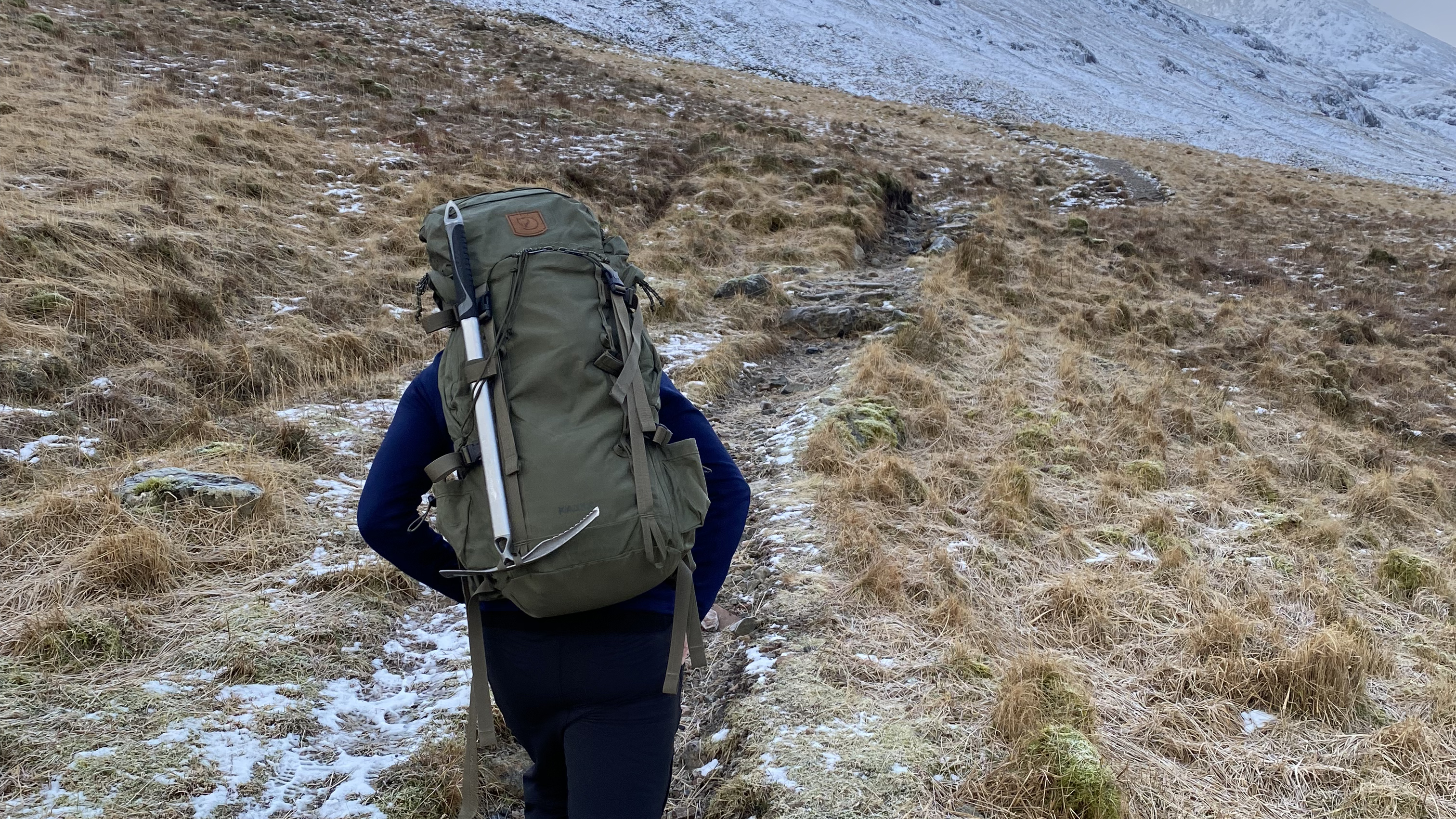
The small harbor town of Örnsköldsvik sits on the Gulf of Bothnia on Sweden’s east coast. This hub of trade and heavy industry, where forested hills meet the sea, is the home of Fjällräven, one of the world’s most revered outdoor brands. It crafts premium clothing and hiking backpacks and has enjoyed great success with everyday products too, like the iconic Kånken daypacks, which the Kajka range shares its Vinylon F face fabric with.
As stated in its Sustainability and Corporate Social Responsibility Report 2022, Fjällräven’s overarching philosophy is that the more and longer outdoor products are used, the better for the environment. Durability and sustainability are at the core of what it is trying to achieve. This was underlined by the fact this backpack arrived at my door with a letter from CEO Martin Axelhed asking to do a deal. ‘If we promise to continue to work hard making long-lasting products with as little environmental impact as possible," he said, "will you promise to let those products work hard too? To use them for many years and not replace them with new products one or two seasons later?"
The Kajka (pronounced Ky-ka) range is Fjällräven’s high-end trekking line of backpacks. It’s part of Fjällräven’s Singi family, featuring gear that’s designed with traditional aesthetics for multi-day journeys, like Sweden’s classic Kungsleden. Whether you’re off on a hut-to-hut trek or you’re taking a backpacking approach, carrying all your own provisions, the higher capacity Kajkas are the ideal tools. The standout feature is undoubtedly the support supplied by its birch wood frame, a unique innovation.
I was excited to test out the 55-liter version, which was kindly supplied by the wonderful people at Trekitt, UK-based outdoor gear specialists.
Meet the reviewer
First impressions
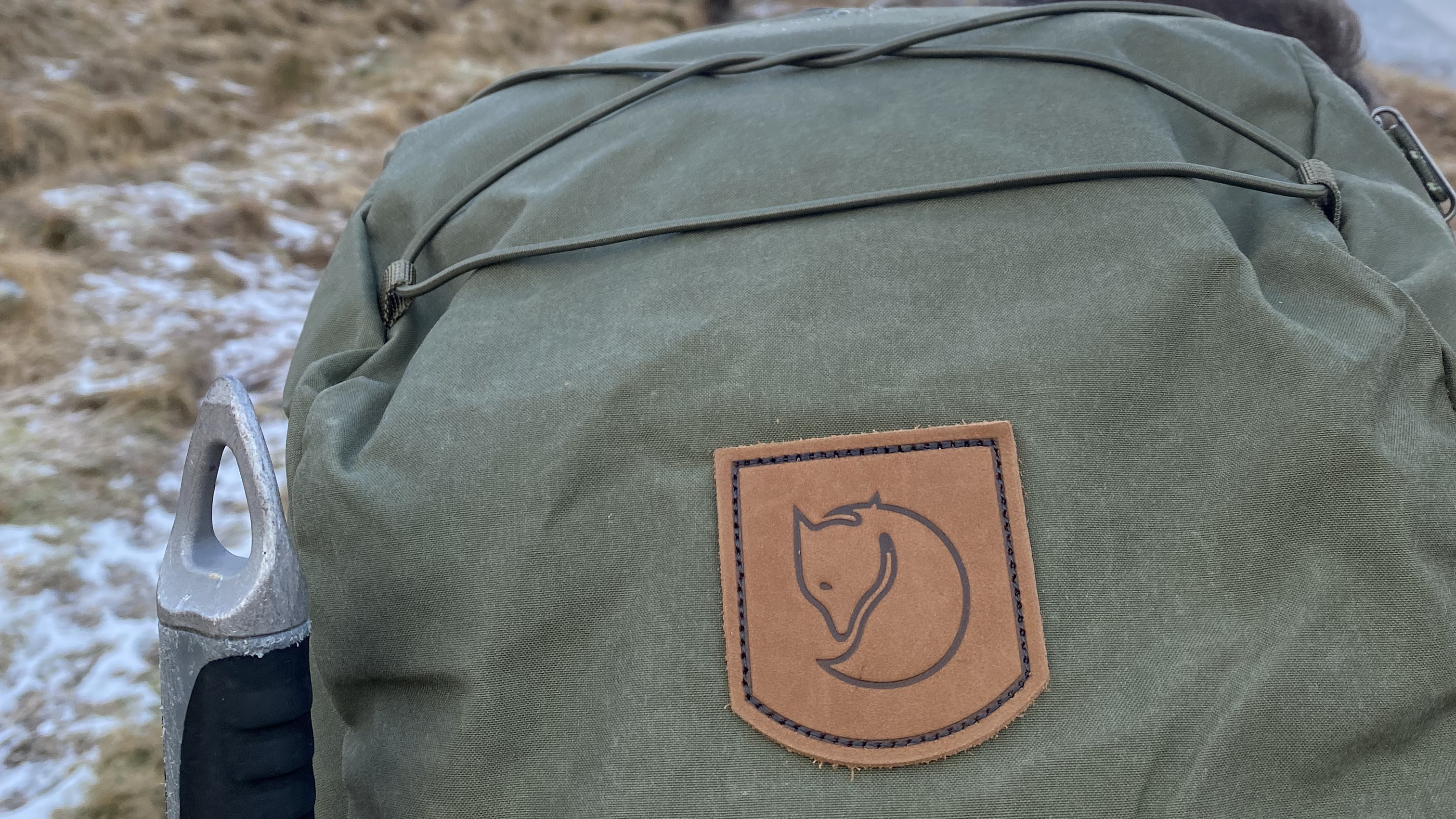
List price: $325 (US) / £360 (UK)
Weight (empty): 2.86kg / 6.3lb
Volume: 55L
Size: 74cm x 45cm x 26cm / 29in x 18in x 10in
Variations available: 35, 55, 65 and 75 with S/M & M/L options, plus one size 85 and 100 liter versions available
Materials: Vinylon F: 100% vinylal, 100% polyamide 500D (recycled) / 100% polyamide 210D lining (recycled), FSC certified birch wood frame, treated with linseed oil
Colors: Green, UN Blue, Khaki Dust, Coal Black
Compatibility: Wild camping, multi-day trekking, travel
The Kajka has an understated flair with its rugged fabrics and timeless aesthetics. At first glance and without prior knowledge, you’d be forgiven for thinking this was a pack plucked from an Indiana Jones film. The contrast with some of today’s ultra-modern looking packs is stark. I was lucky enough to test Osprey’s UNLTD Airscape 68 in 2023, another top-of-the-range trekking pack. However, where the Airscape was futuristic and showy, with its 3D printed lumbar support and lid that magically transforms into a daypack, the Kajka holds its charm closer to its chest.
That’s not to say that it doesn’t show off in its own way. The range is renowned for its birch wood frame, which sits behind the cushioned back panels, screaming high-end calibre. Meanwhile, the large, embossed ‘fell fox’ logo on the front of the lid acts as a stamp of quality.
Frame and fabrics
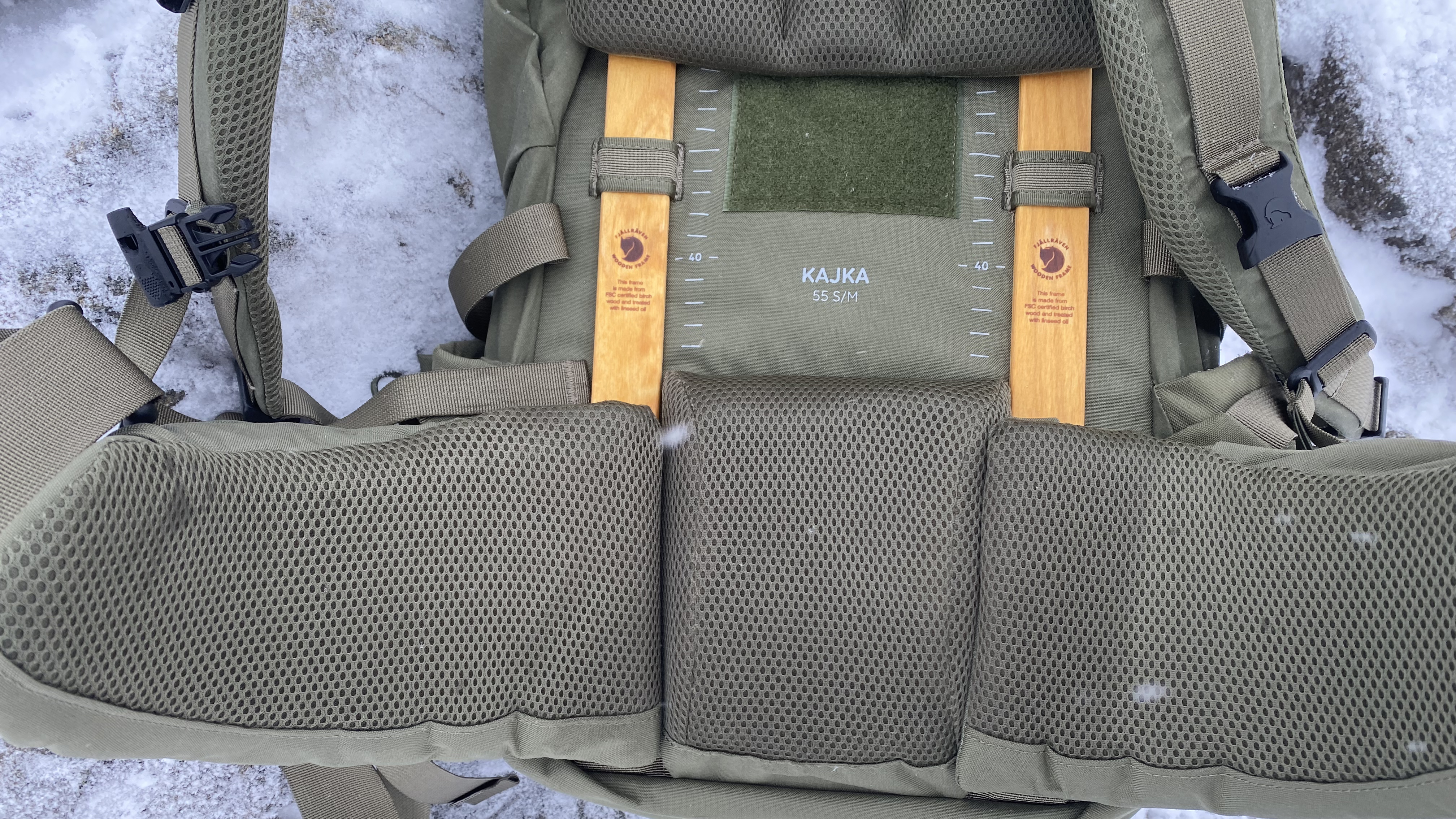
High-capacity trekking packs typically feature some form of supportive frame, adding to the overall carry comfort. This is usually made from something like an aluminium alloy or a stainless steel. The Kajka stands apart from the rest, with Fjällräven choosing to incorportate a strong bird wood frame instead. This not only ties in with the ethos of its Singi family of products (traditional aesthetics and durable build), it also brings the environmental impact of the manufacturing process down significantly compared to the option of an aluminium frame.
The face fabric is a seriously tough 510D Vinylon F, while the lining is a 210D nylon. Although synthetic, there’s plenty of recycled material here and the pack is PFC/PFAS-free. These hardwearing fabrics should last for ages, which is exactly what the brand are trying to achieve from a sustainability perspective.
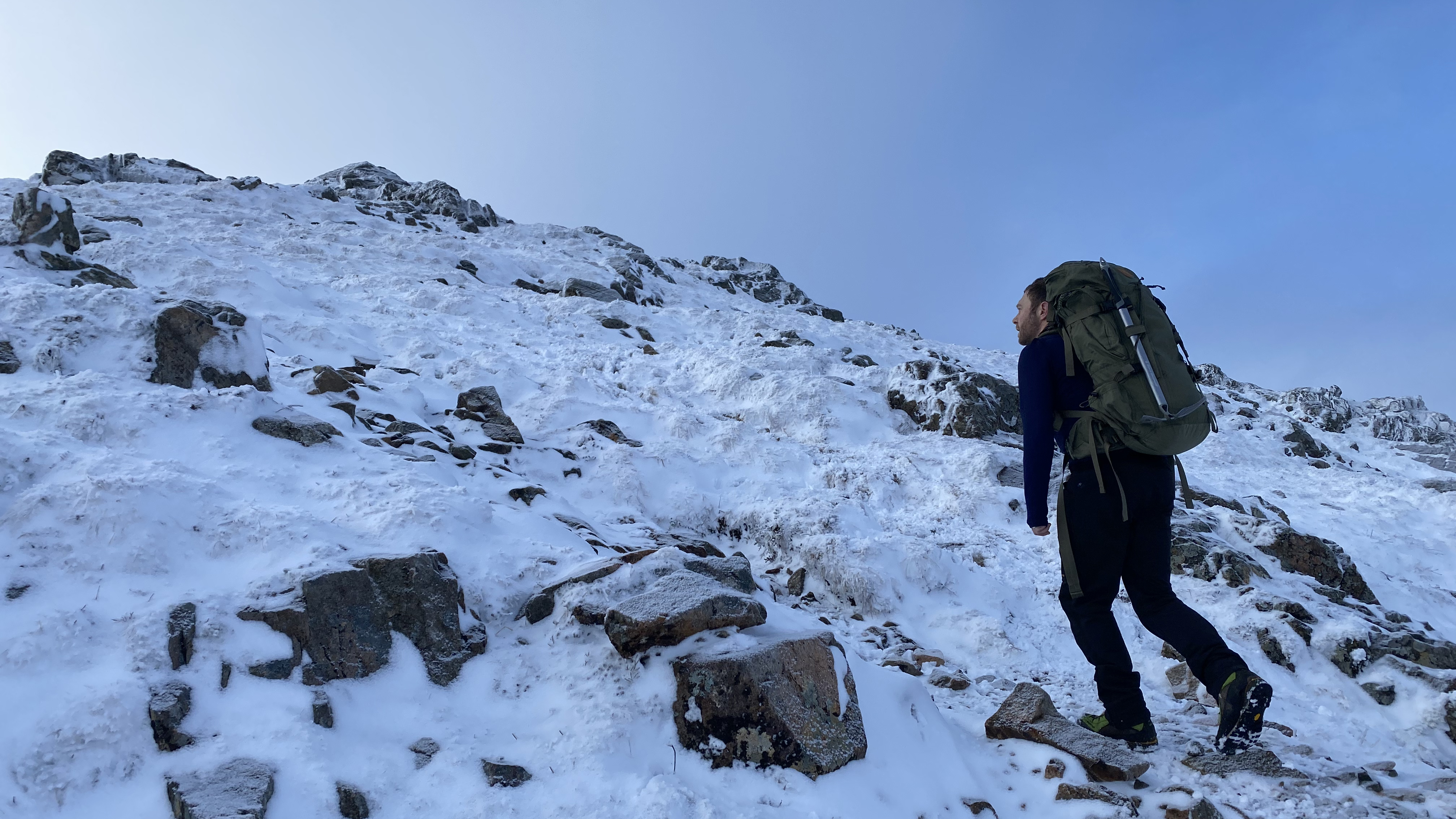
All this talk of robust fabrics and sturdy birch frames might make the Kajka sound hard as nails. Well, as a pack that’s fit for the harsh Scandinavian backcountry, it is. But, it’s also got a softer side. The back panel, shoulder straps and hipbelt are all amply padded, providing high levels of cushioned carry comfort. The height of the backpanel and shoulder straps is easily adjusted by lifting it from the Velcro pad that lines the back and moving it up or down as required. The sliding sternum strap is also easily adjustable and comes with an integrated safety whistle.
There’s no air mesh ventilation system here though, so I’d wager it wouldn’t be the ideal option for trekking through the Alps in the July heat. Meanwhile, the weight of all of this (2.86kg / 6.3lb) means that it’s not a pack for speed demons but is a product for those who like to cover long distances at a more leisurely pace.
Storage for multi-day missions
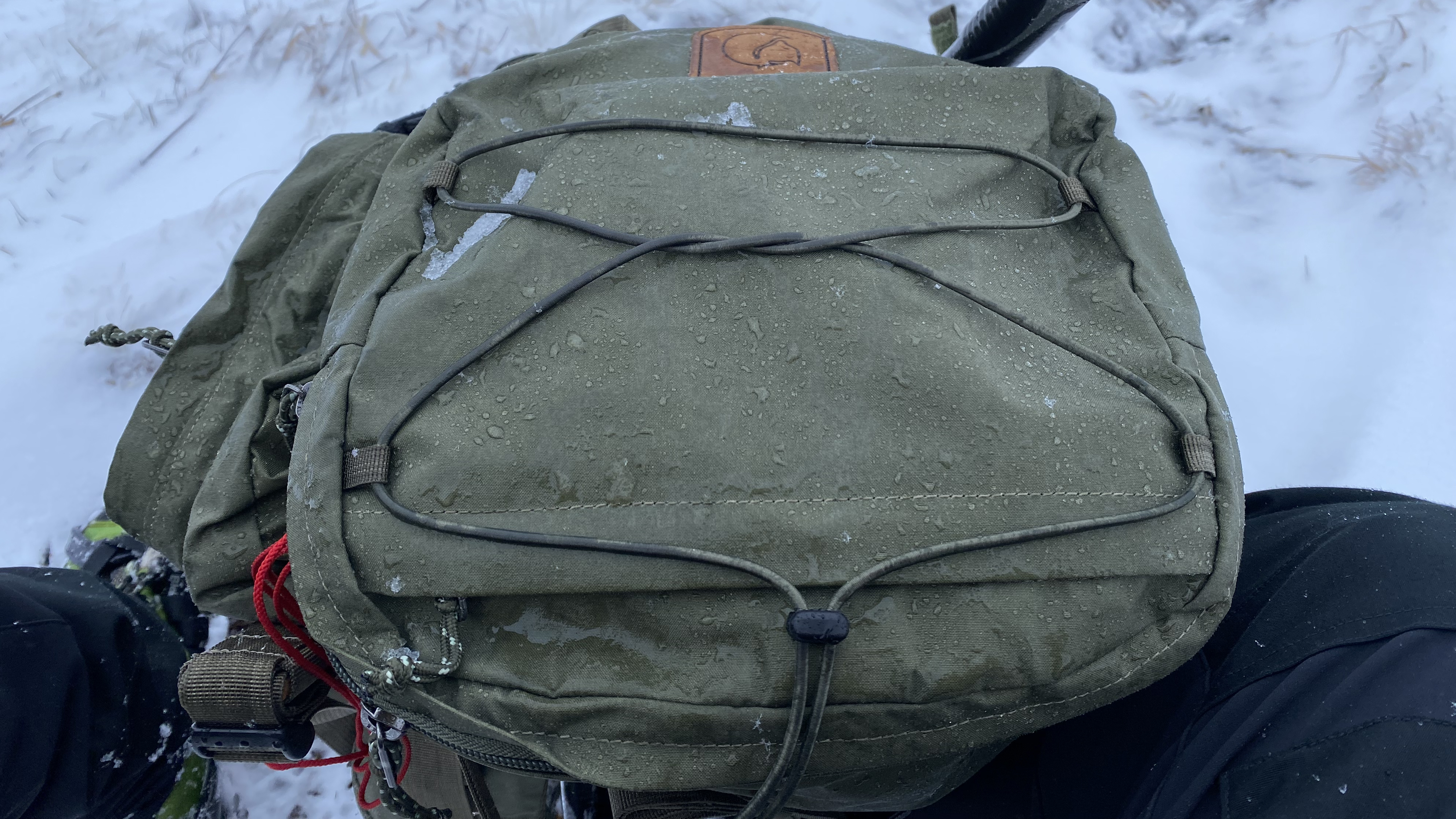
With 55 liters of capacity, multi-day treks are the Kajka’s bread and butter. Its storage is designed with this kind of activity in mind. The main compartment is accessible from the top and from a large, U-shaped zippered opening on the front that allows the wearer to open everything up upon arrival at camp. The 55 is the largest version of the Kajka that doesn't benefit from bottom access to the main compartment, a feature that's present in the 65, 75, 85 and 100 liter versions. The YKK zippers used throughout are chunky and give the impression they’d require a hell of a lot of misuse to fail.
There’s plenty going on in the lid. The underside features a zippered compartment, which is where you’ll find the rainproof cover and its stuff sack. Two zippered compartments sit on the top of the lid, as well as exterior elasticated, bungee webbing for quickly stowing items you might want to hand again quickly, such as a fleece jacket during a long ascent. The lid is also fully removable and can even be worn as a separate unit thanks to a hidden strap on the underside.
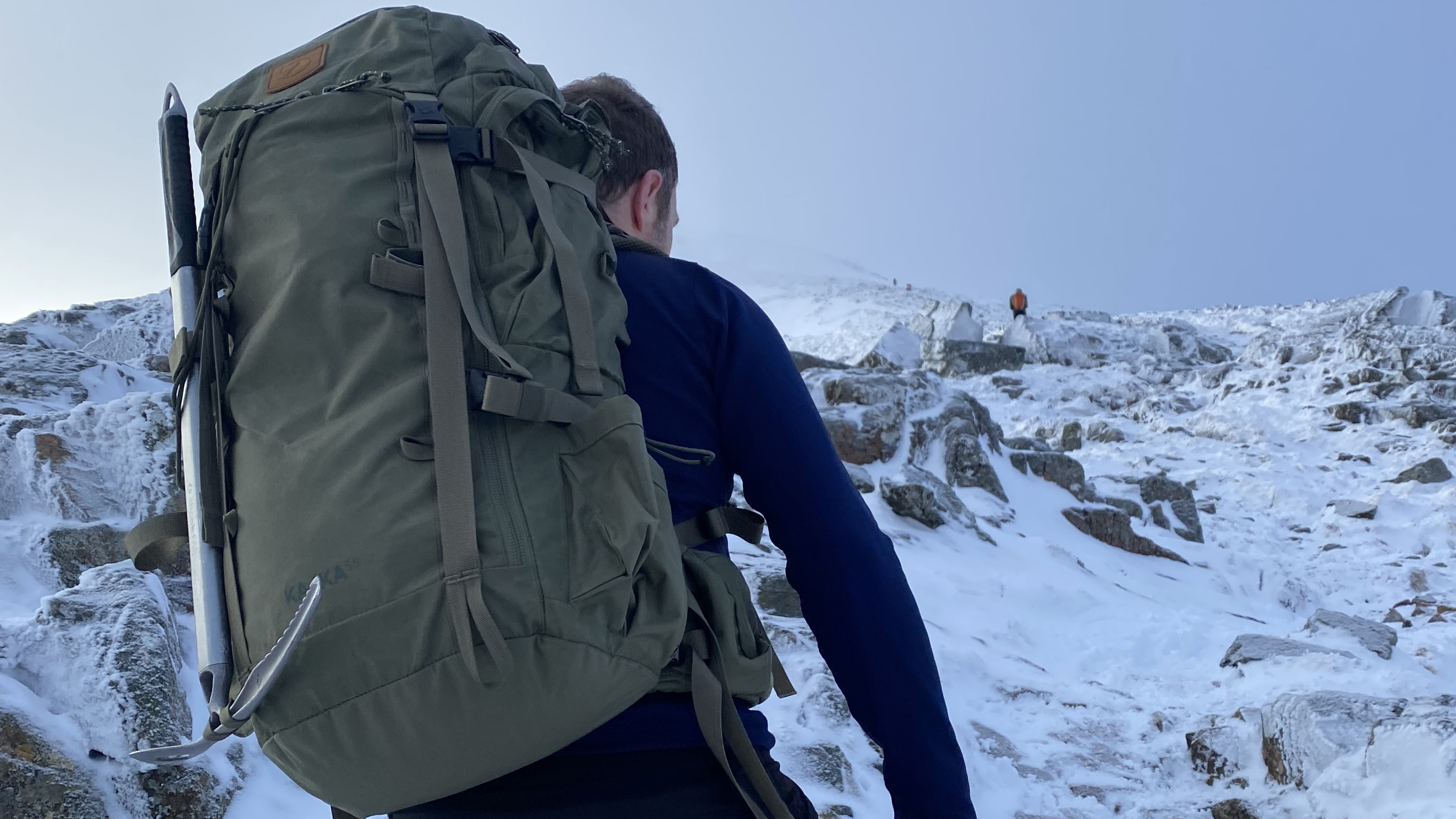
Large, zippered upper side pockets and open lower side pockets provide more quick access options for on the trail, ideal for stashing water bottles and the like. There are also twin zippered hipbelt pockets too, though these aren’t quite a spacious as on some packs.
In terms of external storage, there are fabric loops and Velcro attachments for trekking poles or ice axes. Running down either side of the front are fabric gear chain that you can clip or tie-in items to if required. Compression straps enable you to tighten everything up once you’re ready to set out.
On the trails

I took the Kajka to the closest thing the UK has to Scandinavia’s mountains, the Scottish Highlands in winter. From sections of the famous West Highland Way to winter walks up to Munro summits, it was my trusty and reliable companion. The carrying comfort, despite the pack’s hefty weight, is excellent, particularly when walking along moderate trails like the West Highland Way. The way it distributes heavy loads is superb, making for pleasant carrying mile after mile.
Its overall weight and less than minimalist design meant that it's not the pack I’d ideally chose for gunning up and down Munros, but this isn’t really what it’s designed for. My test period was during winter, when the ample amount of padding added a degree of insulation. However, I can certainly imagine wanting something a little more stripped back in the summer.
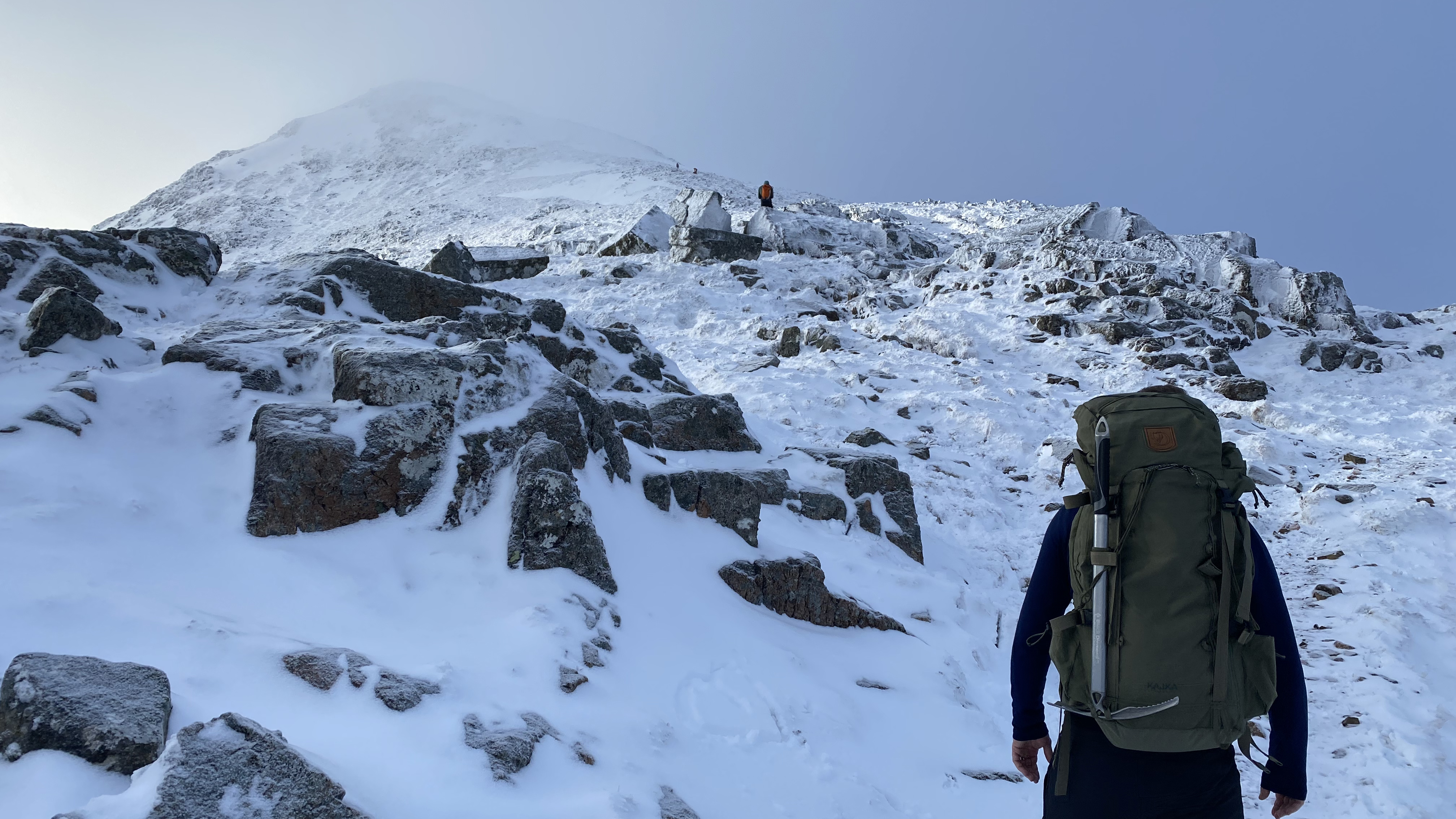
Making adjustments on the move was easy enough, even when wearing hiking gloves, thanks to the pack’s chunky features. The U-shaped opening to the main compartment is useful not only for camping but also for winter walking. When it was time to don crampons once things started to turn icy, I made full use of the ability to unzip and access the bottom of the pack. This would also be useful in an emergency, providing quick access to items like a survival shelter or a first aid kit.
The size of the side pockets is a real plus. I was able to fit my 946 ml (32oz) Hydro Flask bottle in either the zippered, upper side pockets and the open lower pockets. However, the drawcord closure on the bottom pockets didn’t quite grip tight enough to hold such a bottle if I inverted the pack.
All in all, a superb trekking pack that's full of useful features and should last for years. If you look to go long and slow, it's nigh on perfect.







